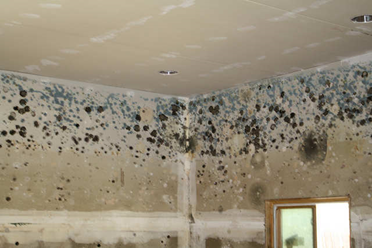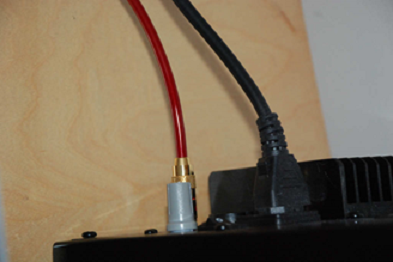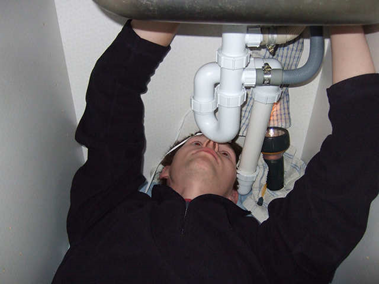Mould is a type of fungal growth that thrives on areas with high condensation or moisture levels. Moulds have a fuzzy appearance and can cause discoloration. They can also lead to biodegradation of natural materials. This fungus grows indoors and outdoors, especially on damp and humid areas. They spread by producing spores. Alternaria, Aspergillus, Cladosporium, and Penicillium are common indoor moulds.
How Moulds Form
 You’ll find moulds in areas with too much moisture, such as in the kitchen and unventilated bathroom. When you heat water, such as when you take a hot shower, vapour occurs. As vapour cools down, it returns to its original state – liquid. This is the condensation process. It is the most common reason moulds form at home.
You’ll find moulds in areas with too much moisture, such as in the kitchen and unventilated bathroom. When you heat water, such as when you take a hot shower, vapour occurs. As vapour cools down, it returns to its original state – liquid. This is the condensation process. It is the most common reason moulds form at home.
Moulds grow under in places with no proper ventilation and are dark, damp, and damp. At home, moulds commonly form in the bathroom, kitchen, basement, and plumbing pipes. When things such as carpet, fabrics, furniture, and wall become damp for an extended period, moulds will start to grow.
How Moulds Affect Your Health
Moulds do not affect everyone. Some are more sensitive to moulds than others are. These fungi emit elements that can cause different allergic symptoms such as eye irritation, sneezing, nasal stuffiness, and skin rash. Depending on how sensitive a person is to moulds, exposure to these microorganisms may lead to severe, life-threatening reactions. Extreme body responses to moulds include shortness of breath, and fever. Other symptoms of mould allergy are asthma, chronic cough, and headaches.
How to Prevent Moulds
Controlling condensation is the most effective way of preventing the growth of moulds at home. When you can effectively manage heating, insulation, and ventilation, you won’t have to worry about moulds.
For proper ventilation, you can:
- Reduce the humidity level by opening doors and windows to let air in. Make sure to do this regularly, especially in your basement, crawl spaces, and attic.
- Improve ventilation in the kitchen and bathroom by installing mechanical ventilations, such as exhaust fans. Make sure to vent these equipment to outside air. Doing this can successfully reduce moisture that occurs from everyday activities.
- Install additional ventilation over appliances that create moisture, such as kerosene heaters, dryers, and stoves. Leave the windows ajar every time you use these equipment.
Manage heating by doing the following:
- Keep moisture indoors at low levels. The ideal level for relative humidity is between 30 % and 50 %. Humidity shouldn’t exceed 60%. To measure humidity, get yourself an affordable humidity meter. You can find these in most hardware stores.
- During rainy and cold season, maintain heat at a low level. In addition, experts recommend nonstop even heat than short bursts of high heat levels.
Don’t let mould grow in your home, especially if you have children. When undetected, they can cause serious health problems. Make sure to check areas, which may have moisture, such as under the sink and in the bathroom. Regularly check your plumbing to make sure there are no leaking pipes, which can also lead to mould growth. If you have moulds at home, let professionals get rid of them for you. Contact your dependable tradesman.

 The law is clear; you should never try to do anything related to home electrics, unless you’re a Registered Electrical Contractor (R.E.C.). The only thing you can safely do when it comes to electricity at home is changing light bulb. Anything the goes beyond this, and you’re venturing to unsafe territory.
The law is clear; you should never try to do anything related to home electrics, unless you’re a Registered Electrical Contractor (R.E.C.). The only thing you can safely do when it comes to electricity at home is changing light bulb. Anything the goes beyond this, and you’re venturing to unsafe territory. This is the most common problems in households. Often times, the pop up in the sink gets filled with rubbish, and hair. Many households would instantly call a plumber to get rid of this problem without even trying to fix it. Stop draining money for this simple problem. For the drain to flow smoothly again, take out the particles trapped in the drain. You can use handy plumbing tools such as Zip-it, or other similar implements. If it’s difficult to get rid of the rubbish, you can take out the pop-up and clean it. Check under the sink for the nut that holds the pop-up in place. You can unscrew the pop up by hand or with a pair of pliers.
This is the most common problems in households. Often times, the pop up in the sink gets filled with rubbish, and hair. Many households would instantly call a plumber to get rid of this problem without even trying to fix it. Stop draining money for this simple problem. For the drain to flow smoothly again, take out the particles trapped in the drain. You can use handy plumbing tools such as Zip-it, or other similar implements. If it’s difficult to get rid of the rubbish, you can take out the pop-up and clean it. Check under the sink for the nut that holds the pop-up in place. You can unscrew the pop up by hand or with a pair of pliers.